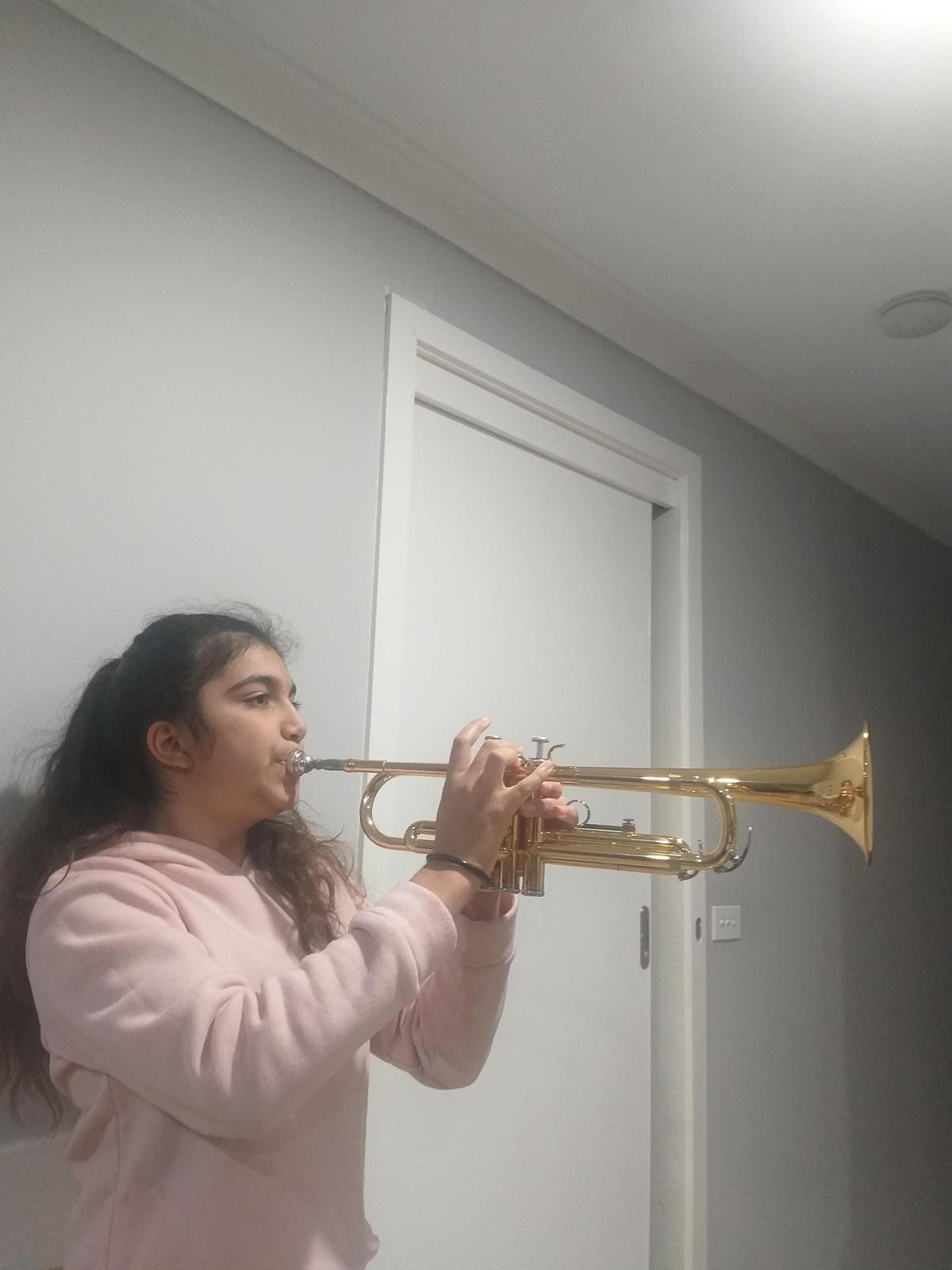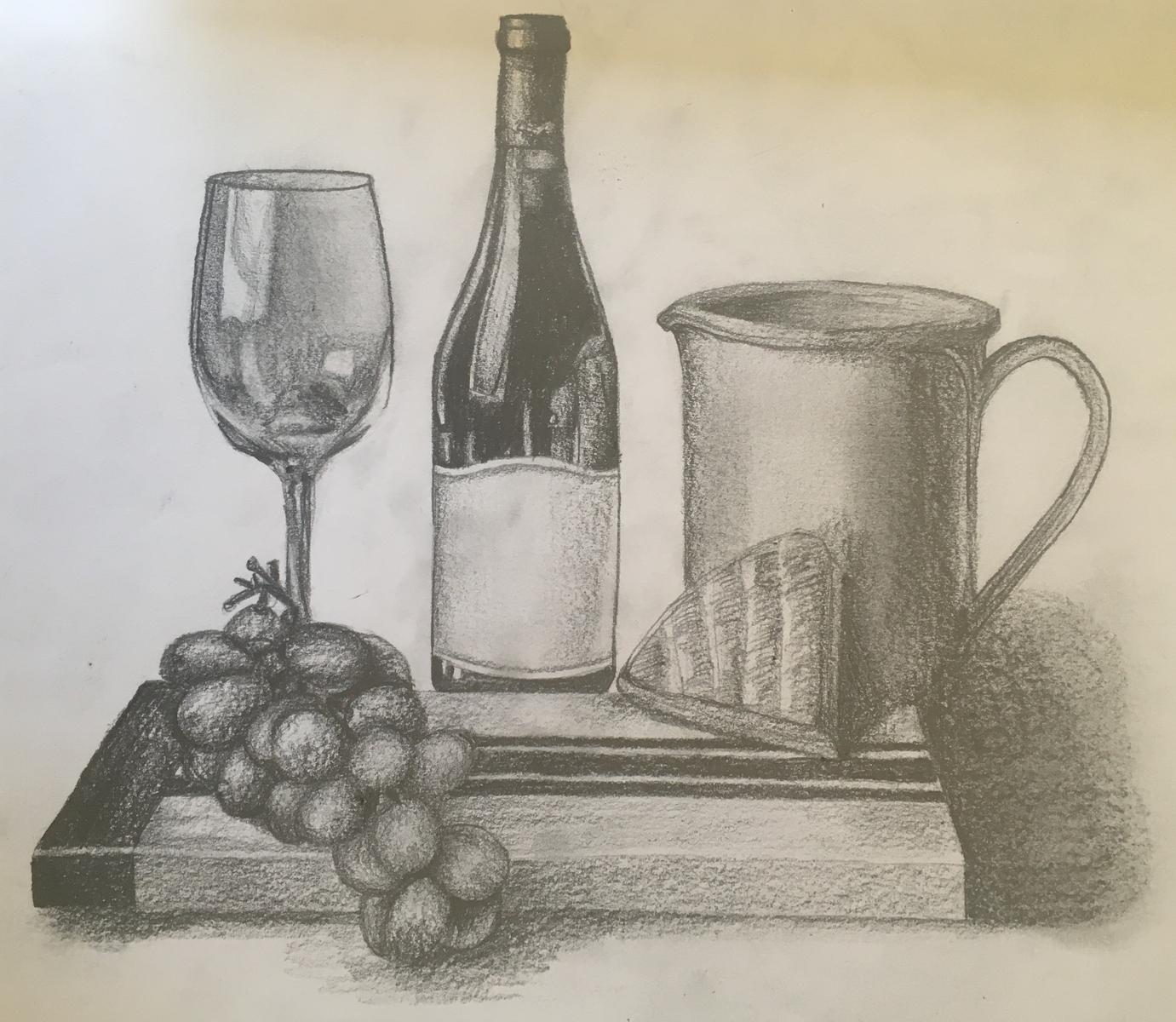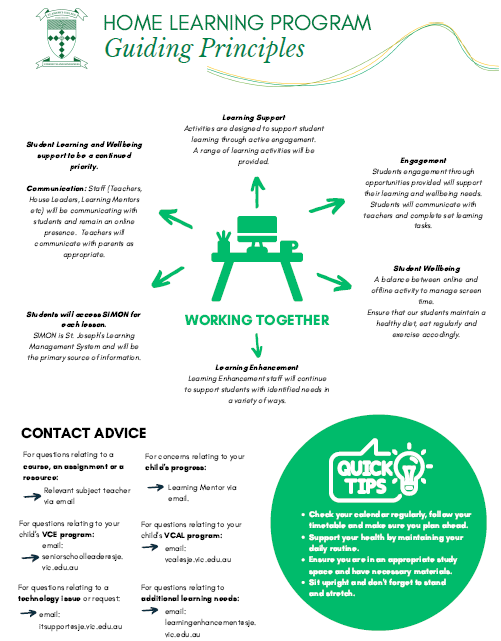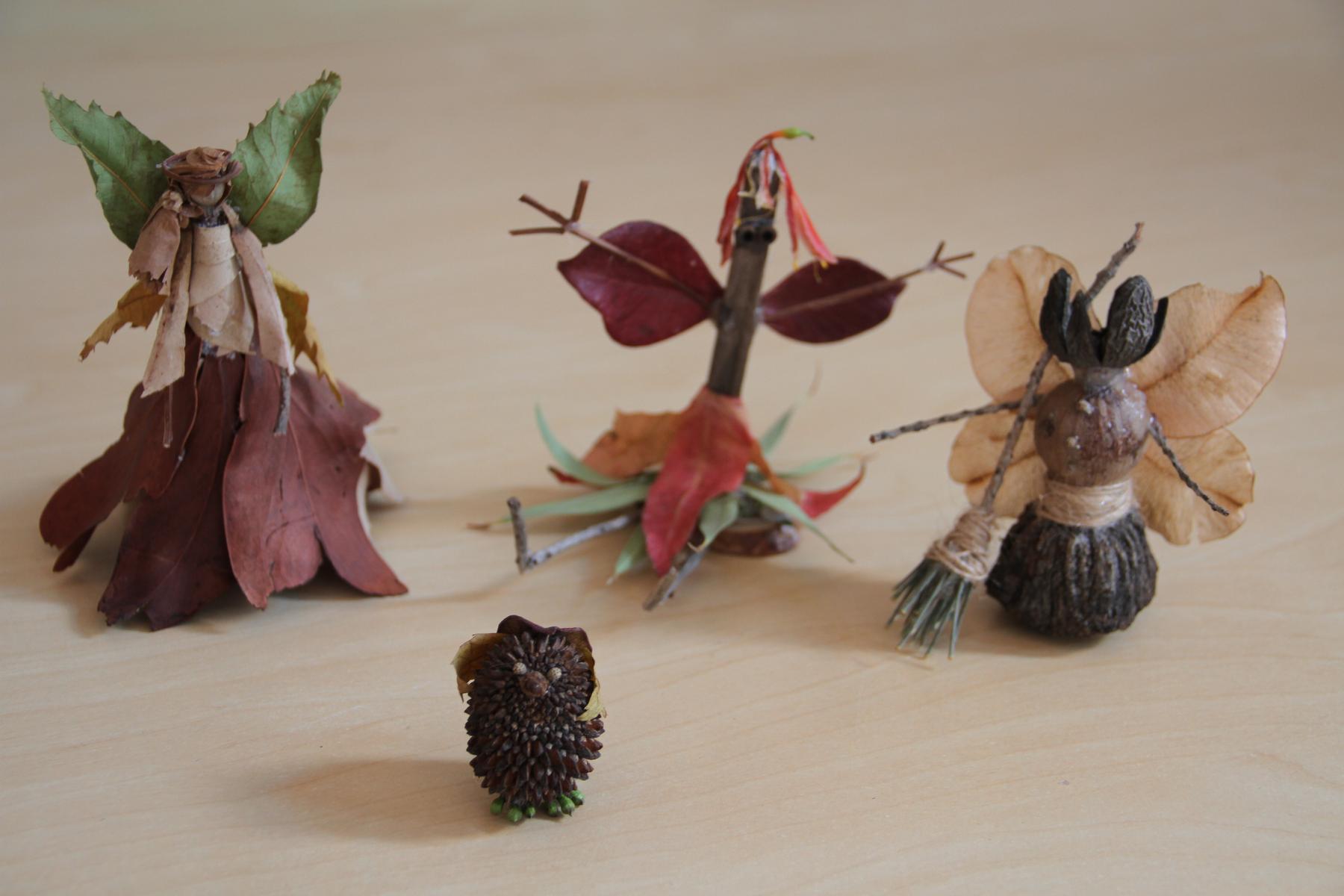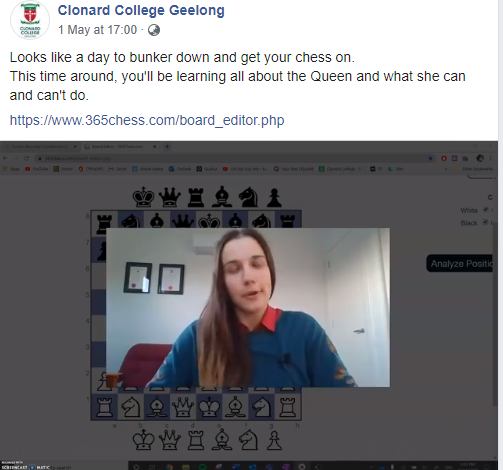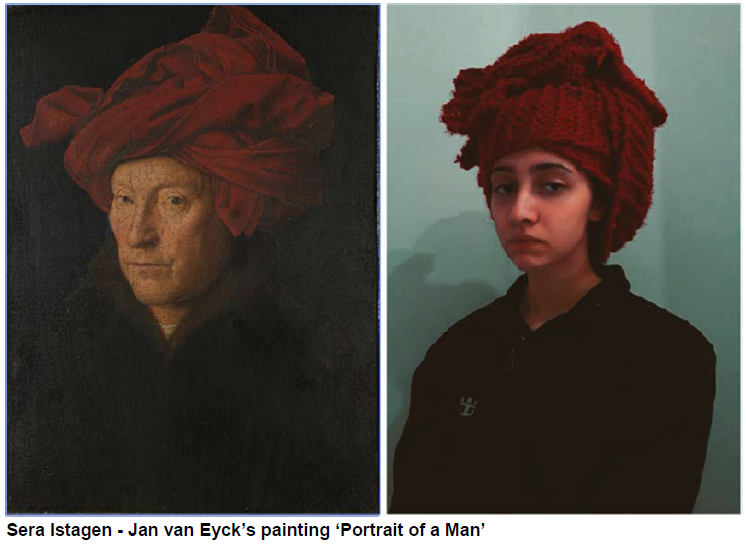The Move to Online Learning

What does Learning and Teaching look like these days?
Our schools have not been closed! Staff across all our schools have reported working long hours and in a more intense manner than ever before. Like all schools around Australia, our ten schools have responded to the COVID19 crisis with flexibility, adaptability, generosity, collaboration and purposeful commitment to student learning. Principals, Leadership Teams and staff were asked to respond in a way never asked of them before. Support staff were asked to contribute their skills in other ways and the technology staff have been in high demand. Various models of learning and teaching have emerged in this time of crisis and in the world of online education, or distance learning, classes can be asynchronous or synchronous. What does it mean?
Synchronous (‘in sync’)
Synchronous learning takes place when two or more people are communicating in real time. Sitting in a classroom, talking on the telephone, chatting via instant messaging are examples of synchronous communication. So is sitting in a classroom a world away from where the teacher is speaking via teleconferencing. Think "live".
Asynchronous (convenient)
When something is asynchronous, the meaning is opposite. The teaching takes place at one time and is preserved for the learner to participate in at another time, whenever it is most convenient for the student. Technology such as email, e-courses, online forums, audio and video recordings make this possible. It means that learning is not taking place at the same time that a subject is being taught. Think "convenient".
(Peterson, Deb. ThoughtCo, Feb. 11, 2020)
Our schools have adopted a mixture of these two methods and have worked long and hard to ensure that the learning community stays connected, which includes the monitoring of the wellbeing of students and staff. Our colleges have modelled what experience tells us is so helpful in dealing with unsettled times:
- Staying connected when there is uncertainty and some sense of dislocation
- Learning new skills (both students and teachers) - so that all are better equipped to re-establish and enrich our lives when we come out the other side of this crisis
- Keeping hope alive by taking charge of our life in a new way; this builds resilience and gives us confidence that we can surmount obstacles and be a stronger person individually and stronger as a community.
During our on-line catchups, Principals have reported an increase in communication with families and students and above normal rates of attendance in classes. Most surprising has been that some students who might normally be described as disengaged, have flourished as a result of this way of learning. Principals have also expressed a desire to instigate new learning strategies and to investigate ways that the on-line learning platform can be further developed once schools resumes to its full capacity. In addition, we have witnessed strong collegial support amongst our schools as Principals call on each other for advice and support and to share their own new learnings and wisdom.
Our schools have had to deal with mixed messages from Federal and State governments and yet judging from the many messages read on social media, families have been most appreciative of the effort made by their College to ensure that all students, especially those who have had difficulties or who have not had easy access to the internet or those facing other vulnerabilities, have stayed connected and that learning is not too disrupted for the community.
Congratulations to all our schools for this amazing accomplishment. Below is a snapshot of some of the fantastic online learning activity taking place across our ministries!
Brigidine College, St. Ives
‘Necessity is a Great Teacher’
Whilst it has been an enormous challenge to change our mode of delivering lessons, our teachers and students have embraced learning opportunities with a positive attitude. Personally, this pandemic has provided me with an opportunity to reinvent myself as an educator; as the saying goes, necessity is a great teacher!
I have also realised why teachers will never be out of a job and cannot be replaced by robots, because learning is essentially a social exercise and building a sense of community is much more challenging when we are all sitting behind an interface.
Learning is a collective experience; it isn’t an individual pursuit. As John Donne wrote: no man is an island. So, whilst I am very pleased that because we live in 2020 and therefore have the tools we need to continue to provide our students with quality teaching and learning experiences, the isolation that is associated with being a solo voyager is impacting our community on an emotional level.
Every day that I am working remotely, I am reminded precisely why schools are so important; as educators, we provide our students with a sense of belonging, connection, routine, psychological safety, normality and structure.
From the outset, I conveyed to the staff that we cannot expect that remote learning will ever be able to fully replicate the dynamism and sense of community which one receives when being part of a school.
Article 26 of the UN Declaration of Human Rights is about education, and it reminds us that one of the most important aspects of education is: the full development of the human personality. That is why my colleagues and I are really looking forward to the day when school-life will return to normal, so that we can re-institute assemblies, clubs, carnivals, liturgies, excursions, rites of passage, inclusions; all of which are integral to the holistic development of our students.
We know that any change in learning design requires prototyping and it is iterative, as such, after our first week of remote learning, we made changes the timetable. These amendments were well-received because they allowed for more time for students to refresh between lessons.
This was undoubtedly a positive move but as a leader of learning and a parent (who has two children who are now learning from home) I am acutely aware of the fact that even a change to our timetable will not be able to alleviate the fact that families are also managing the emotional and psychological stressors that are associated with living through a pandemic. The reality is that none of us have been habituated into this new normal.
An additional challenge which schools continue to face is the extent to which our students engage in either asynchronous (a word which I only learned recently: literally means not keeping time together) or synchronous learning: which is learning in real time (such as Zoom).
At the end of Term 1, I encouraged our teachers to adopts more of the asynchronous approach, this requires students to access information, demonstrate what they've learned, and communicate with classmates without necessarily being in the same classroom or even in the same time zone to participate. It has also been referred to as ‘location independent learning’.
Teachers have continued to prepare engaging and interactive learning tasks, which promote higher order thinking. However, these tasks need not necessarily occur in real time. Some of the tasks students engage in are listed below:
· Recorded a presentations or slideshows.
· Collaborative tasks/documents in the cloud.
· Discussion boards.
· Portfolio or project-based learning. .
· Quizzes using interactive platforms, such as Firefly, Socrative, Maths Space and Education Perfect.
· Activities which do not require students to be on a screen: for example, reading a book or article, watching a film which is relevant to a particular subject area. · Teachers may create online group spaces for small groups of students and ask them to support and consult with one another before sending emails to you directly.
Teachers are still able to check-in with their mentor groups and classes and staff are still be engaging with students, providing feedback and support where required.
Research into effective online learning has demonstrated that: “Asynchronous Learning is the key feature of successful online learning programs” (Elizabeth Trach). This is primarily because asynchronous learning allows flexibility for learners as it easily accommodates different learning styles, as students can often "choose their own adventure" when it comes to the order they wish to cover material and how deep to dive into a given topic.
I have learned that communication really is the key, as well as the ability for students to be supported in creating weekly learning targets and make plans for all subjects so that teachers can pre-empt potential challenges which might emerge. We want to be able to ensure that students feel a level of success each week; and this will look different for every student.
Elizabeth Webster, DP Teaching & Learning
Star of the Sea, Brighton
Growing Mindsets with Remote Learning
It’s Wednesday April 15, 8:20am, and where there is usually a hubbub of excited girls ready to start a new term, Presentation Place is eerily silent. It’s the beginning of a new world of teaching, where instead of a campus full of students, Star of the Sea College has had to re-evaluate teaching and classroom practices, offering remote learning access to students during the COVID-19 pandemic.
When Premier Daniel Andrews announced during the Term 1 holidays that all Victorian students are to undertake remote learning for the whole of Term 2, Star of the Sea College had to reassess its processes and transition from face-to-face to remote teaching methods.
For some, this unprecedented change could have caused panic, but for Star of the Sea College it has become an opportunity for growth – development of pedagogical practices and strategies to support remote student learning and to ensure the health and safety of the whole community.
Prior to closure due to COVID-19, the College’s Digital Specialists provided teachers with an array of resources to support remote learning. The College devised a Continuity of Learning Plan and developed Assessment processes to support the shift to online delivery of teaching and learning. The aim was to ensure that teachers were equipped with the skill set and resources to support digital delivery and that clear parameters were established to support learning and assessment processes.
Never in the recent history of education have we been faced with such a challenging narrative – teachers are reminding students that we are living through history.
Reframing the impact that the pandemic has had on daily life has provided an opportunity to turn this experience into a learning opportunity. Students are now learning about viruses, global economics, geography, vaccines, politics and statistics. Students are also benefiting by learning ways to adapt to an online environment and developing ways to remain in contact with their friends and peers.
And in the creation of a wonderful symmetry, staff and students are learning together.
Staff are fine-tuning their digital demographic teaching skills by learning how to maintain a sense of normality, while offering the same level of support and direction that the student would receive in the classroom – a steep learning curve.
These challenges may not be part of the academic curriculum, but with a growth mindset these are fantastic learning opportunities for both the teachers and students alike.
In such unparalleled times, schools have been forced to re-evaluate processes and make changes to the academic calendar in support of continuing high-level education. In implementing these changes, students will continue their educational journey. The staff are working as a collective, to ensure that the delivery of curriculum and assessment in a remote environment is complementary to the work students would have completed in our usual face-to-face environment.
Another critical challenge in these testing times is in keeping our community connected – regularly communicating to staff, students and parents through various channels has been crucial. The College is aware that in these uncertain times, the wellbeing of our students must be at the forefront of our minds. Mentors and Pastoral Leaders are regularly contacting students to see how they are managing learning from home, offering the same support and guidance that they would be offering if undertaking face-to-face communication. It is important that we stay connected as a College Community as we navigate our way around this changing landscape.
The success of online learning is dependent upon the partnership between school and home; teachers and parents working collectively to support our students. Remote learning has been well accepted across the majority of the Star community, with messages of gratitude being emailed to the College since the start of the term. One family wrote:
"We would just like to say a very big thank you for doing so well at a huge task of getting all the girls ready for the beginning of Term 2. We are very appreciative of all of the teacher’s efforts and appreciate the stress and extra work that must’ve been involved thus far. We feel that our daughter is very confident moving forward with remote learning for now until all our lives can get back to normal. Again, thank you so much you’ve done an amazing job."
It is a time for challenge. It is a time for change. With a growth mindset these challenges can be beneficial in developing resilience and as strong Star Women, our students have the support and the ability to take these opportunities and use them to their advantage and thrive in this on-line world.
Sarah Tymensen – Deputy Principal, Learning and Teaching
Kilbreda College
Killester College
St. Joseph's College
Kildare College
FITNESS AT KILDARE
We are so pleased to have our students back at the College embracing social distancing measures. During these unprecedented times, we have encouraged physical and mental wellbeing by developing a fitness regime for our students to incorporate at home.
ONLINE LEARNING FOR ART
Our Year 9 Art students participated in their studies through online learning. Students have also taken a creative approach to their learning by exploring their backyards and crafting beautiful fairies from leaves.
VIRTUAL COLLEGE TOURS & ENROLMENT INTERVIEWS
Due to the restrictions and limitations on gatherings, upon the commencement of Term 2, Kildare held its first Virtual College Tour using Zoom. Our intention was for the tour to remain as authentic as possible. Families were welcomed by Tina Neate - Principal, Michelle Camilleri - Deputy Principal and a student via Zoom before being introduced to our facilities and what Kildare has to offer through a real-time PowerPoint presentation and video tour showing the College buildings and grounds. The Virtual Tour concluded with a Q & A chat forum. Subsequent enrolment interviews have been phone conversations with a member of the Leadership Team.
Clonard College
Marian College Ararat
Year 11 Food Studies - Australian Famous Chef Assessment Task
Brigidine College, Indooroopilly
Marian College, Sunshine West
The Year 11 Studio Arts class has been exploring the topic of art appropriation. Each student has chosen a famous painting to study. Without access to our usual plethora of
supplies from the Design Warehouse, the students got creative with materials they had around the house. Drawing inspiration from the social media challenge ‘Between
Art & Quarantine’ the Year 11’s exceeded expectations in making the viewer smile! Don’t worry no babies were harmed in the making of these portraits and all the food
was eaten at the end!















